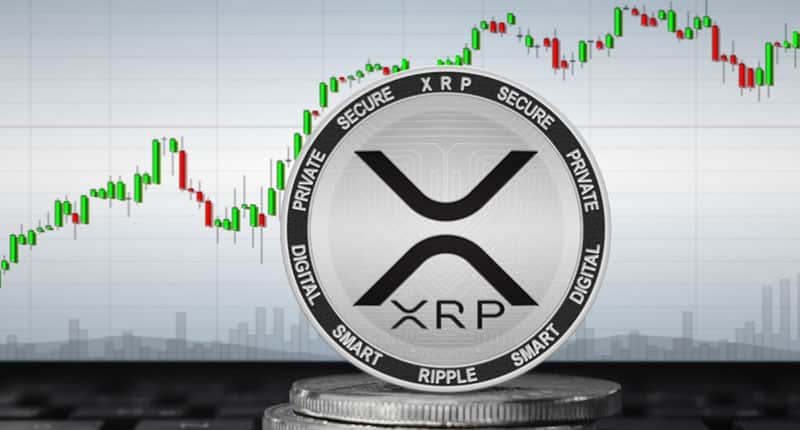Ripple, also known as XRP, is a digital currency and open-source blockchain technology that facilitates fast and secure cross-border transactions. Unlike traditional financial systems that rely on intermediaries such as banks, Ripple enables direct transfers between parties, reducing costs and settlement times. In this article, we will explore the history, features, use cases, criticisms, and future outlook of Ripple.
History of Ripple
- Creation of Ripple Ripple was created in 2012 by Jed McCaleb and Chris Larsen. Initially, the project was known as RipplePay and aimed to provide a decentralized digital currency system. However, it later evolved into Ripple, a real-time gross settlement system, currency exchange, and remittance network. The underlying technology, the Ripple Protocol Consensus Algorithm (RPCA), ensures the integrity and agreement of transactions on the Ripple network.
- Founders and Team Jed McCaleb, a prominent figure in the cryptocurrency space, co-founded Ripple and played a vital role in its early development. Chris Larsen joined as the co-founder and served as the CEO until 2016. Today, Ripple Labs, the company behind Ripple, has a team of experienced professionals working towards the advancement of the technology and its adoption in various industries.
How Ripple Works
- Consensus Algorithm Ripple’s consensus algorithm, RPCA, is different from the proof-of-work mechanism used by cryptocurrencies like Bitcoin. Instead, it relies on a network of trusted validators to agree on the state of the network. This consensus mechanism allows for faster transaction confirmation and scalability, making Ripple well-suited for high-volume transaction environments.
- RippleNet and XRP Ledger Ripple operates on its own network called RippleNet, which consists of financial institutions, payment providers, and digital asset exchanges. The XRP Ledger, the native decentralized ledger of Ripple, records all transactions and balances. XRP, the digital asset native to the XRP Ledger, serves as a bridge currency, facilitating liquidity and enabling instant transfers between different fiat currencies.
- Ripple’s Cross-Border Payments One of Ripple’s primary use cases is cross-border payments. RippleNet enables financial institutions to connect and transact with one another using the XRP Ledger. By leveraging the efficiency of XRP as a bridge currency, Ripple aims to reduce the high costs and lengthy settlement times associated with traditional remittance systems.
Key Features of Ripple
- Fast and Low-Cost Transactions Ripple’s technology allows for near-instantaneous transaction settlement, significantly reducing the time required for cross-border transfers. Additionally, the low transaction fees associated with Ripple make it an attractive option for individuals and businesses looking to send money globally.
- Scalability and Interoperability Ripple’s architecture is designed to handle a high volume of transactions per second, making it scalable for use in large-scale financial systems. Furthermore, RippleNet’s interoperability allows for seamless integration with existing infrastructure, enabling financial institutions to adopt Ripple without significant disruptions.
- XRP as a Bridge Currency XRP serves as a bridge currency on the XRP Ledger, facilitating the liquidity and efficient exchange of different fiat currencies. By using XRP as an intermediary currency, parties can avoid the need for multiple currency conversions, reducing costs and increasing the speed of transactions.
Use Cases of Ripple
- Financial Institutions Ripple’s technology is particularly attractive to financial institutions seeking to improve their cross-border payment services. By leveraging RippleNet and XRP, banks can enhance liquidity management, lower costs, and provide faster settlement times for their customers.
- Remittances and Cross-Border Payments Remittance providers can benefit from Ripple’s technology by offering faster and more cost-effective cross-border payment solutions. Ripple’s network allows money to be sent directly to the recipient, eliminating the need for multiple intermediaries and reducing the associated fees.
- Tokenization and DeFi Ripple’s technology also has applications in tokenization and decentralized finance (DeFi). The XRP Ledger supports the creation and management of tokens, enabling the representation of various assets on the blockchain. This functionality opens up possibilities for the development of decentralized applications and innovative financial products.
Criticisms and Challenges
- Centralization Concerns Ripple has faced criticism for its perceived centralization due to the presence of Ripple Labs as a central authority in the network. Critics argue that this contradicts the principles of decentralization that underpin many blockchain projects.
- Regulatory Challenges As with any cryptocurrency, Ripple operates within a complex regulatory landscape. The classification of XRP and its legal status in different jurisdictions have been subject to scrutiny and ongoing regulatory discussions.
- Competition and Adoption Ripple faces competition from various other blockchain projects and financial technology companies aiming to revolutionize cross-border payments. The adoption of Ripple’s technology by financial institutions and the broader market remains a key challenge for its widespread implementation.
Future Outlook
- Ripple’s Partnerships and Expansion Ripple has formed partnerships with numerous financial institutions worldwide, demonstrating its commitment to establishing itself as a trusted solution for cross-border payments. Continued collaboration and expansion into new markets are expected to contribute to Ripple’s future growth.
- Integration with Central Bank Digital Currencies With the rise of central bank digital currencies (CBDCs), Ripple has the potential to play a role in facilitating interoperability between different digital currencies issued by central banks. Integration with CBDCs could further enhance the efficiency and accessibility of cross-border transactions.
Conclusion
Ripple (XRP) is a digital currency and blockchain technology that aims to revolutionize cross-border payments. Its fast and low-cost transactions, scalability, and interoperability make it an attractive solution for financial institutions and remittance providers. While facing criticisms and regulatory challenges, Ripple continues to expand its partnerships and explore new opportunities in the evolving landscape of digital currencies.
FAQs
- Is Ripple the same as XRP? No, Ripple refers to the company behind the technology, while XRP is the digital asset native to the Ripple network.
- How does Ripple compare to Bitcoin? Ripple and Bitcoin are different cryptocurrencies with distinct use cases. While Bitcoin aims to be a decentralized digital currency, Ripple focuses on facilitating efficient cross-border transactions.
- Can individuals use Ripple for everyday transactions? Ripple’s primary focus is on facilitating transactions between financial institutions and remittance providers. However, individuals can indirectly benefit from Ripple’s technology through improved cross-border payment services offered by participating banks.
- What is the role of XRP in Ripple’s ecosystem? XRP serves as a bridge currency on the XRP Ledger, facilitating liquidity and enabling efficient exchange between different fiat currencies. It plays a crucial role in Ripple’s cross-border payment solutions.
- Is Ripple secure? Ripple employs advanced cryptographic techniques and consensus algorithms to ensure the security and integrity of transactions on its network. However, it’s essential to practice proper security measures when managing digital assets.










